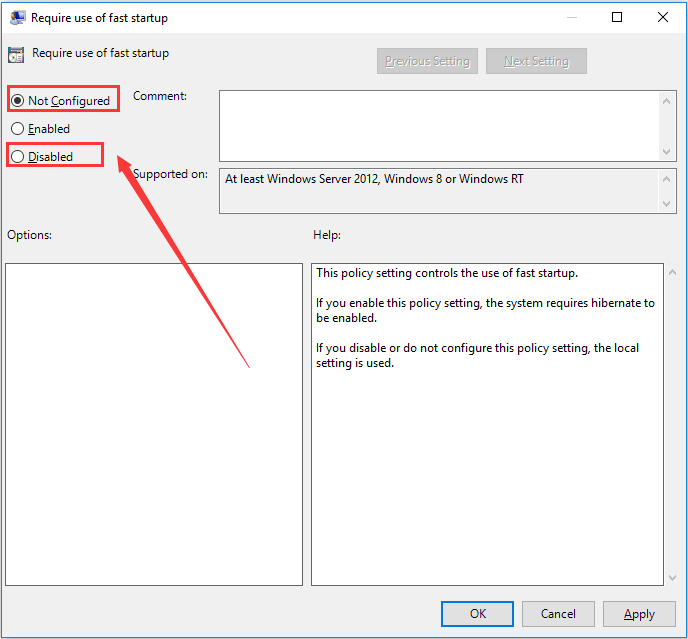

Instead, it just refreshes the RAM with the loaded image from the hibernation file and delivers lead directly to the login screen (instead of loading the kernel, drivers, and system state again). When the computer is restared again, Windows does not have to reload the kernel, drivers, and system state individually. Disable Fast Startup Using Control Panel If you are still fond of using the Control Panel, you can follow the steps below to disable Fast Startup on your computer.
DISABLE FAST BOOT DRIVERS
Windows then alerts device drivers that support it to prepare for hibernation, saves the current system state to the hibernation file, and turns off the computer.
DISABLE FAST BOOT PC
When Fast Startup is enabled before the PC is shutdown, Windows will close all activity applications and logs off all users, just as in a normal cold shutdown.Īt this point, Windows is in a state very similar to when it's freshly booted up: No users have logged in and started programs, but the Windows kernel is loaded and the system session is running. Fast startup make Windows boot up even faster everytime a computer start up.įast Startup combines the functions of a normal cold shutdown and the hibernate mode.
DISABLE FAST BOOT HOW TO
If you turned off Fast Startup in Windows 10 using the first part of this manual, simply repeat the steps and place a checkmark next to the Turn on Fast Startup (recommended) option on Step 6.This document explain how to enable or disable "Fast Startup" mode in Windows 10 and Windows 11. You need to enable hibernation first before turning Fast Startup back on. After that, Windows 10 will disable hibernation together with Fast Startup. Enter the following command: powercfg /hibernate off.Scroll down to Shutdown settings and uncheck Turn on fast startup. Press Ctrl + Shift + Enter to launch Command Prompt as Administrator. Click Change settings that are currently unavailable.Press Win + R and enter the cmd command.To disable Fast Startup in Windows 10, do the following: Go to Security tab > Default Secure boot on and set as Disabled. Select the option which asks you to Turn on fast startup. How do I disable secure boot Boot and press F2 to enter BIOS. Uncheck the Turn on Fast Startup (recommended) option.įinally, you can also turn off Fast Startup in Windows 10 by disabling hibernation. On the System Settings window, get down to the last section of Shutdown settings.
DISABLE FAST BOOT PASSWORD
If you try to disable Fast Startup on Windows 10 using a regular user without Administrator privileges, use an Administrator password on the UAC screen. These are the steps to disable the Fast Startup feature on Windows 10: Step 1: Open the Control Panel. That is where you need Administrator privileges. Next, click the Change settings that are currently unavailable link.In a new Control Panel window, click the Choose what power buttons do link.

It will get you to the needed section inside the classic Control Panel without browsing its vast jungles.


Six years after the release of Windows 10, you still need to open the Control Panel to disable Fast Startup and manage some other critical power-related settings. Fast Startup settings in Windows 10 live inside the Classic Control panel.


 0 kommentar(er)
0 kommentar(er)
